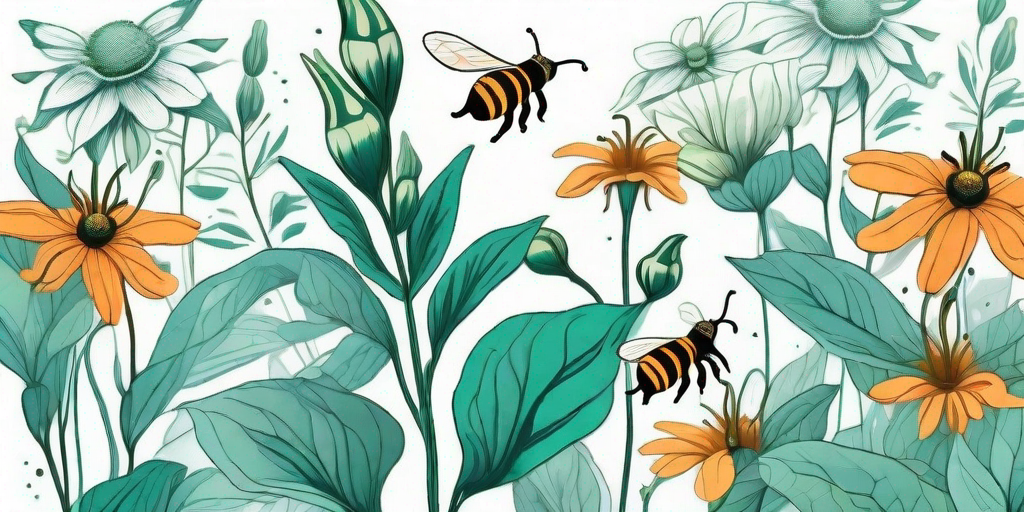
Pepper plants, with their vibrant fruits and lush green foliage, can add a dash of spice to any garden. But what if your pepper plants are not producing as much fruit as you'd like? The culprit could be a lack of pollination. Fear not, dear gardener, because we're about to embark on a journey that will turn you into a pepper pollinating pro.
Understanding Pepper Pollination
Before we dive into the nitty-gritty of pepper pollination, let's take a moment to understand what pollination is all about. In the simplest terms, pollination is the transfer of pollen from the male part of a flower (the anther) to the female part (the stigma). This process is crucial for the production of fruit.
Pepper plants are self-pollinating, meaning they don't need the help of bees or other insects to transfer pollen. However, sometimes, due to various reasons like lack of wind or low insect activity, the pollen doesn't make its way to the stigma, resulting in low fruit production.
The Role of Bees and Wind
While pepper plants are capable of self-pollination, bees and wind can play a significant role in aiding the process. Bees, as they flit from flower to flower, carry pollen on their bodies, inadvertently helping in pollination. Similarly, wind can shake the plants, causing the pollen to fall onto the stigma.
However, if you're growing peppers indoors or in a greenhouse, these natural pollinators might not be available. That's where hand pollination comes into the picture.
Mastering the Art of Hand Pollination
Hand pollination might sound like a complex task, but it's actually quite simple. All you need is a small paintbrush or a cotton swab, and a gentle hand.
First, identify the flowers that are ready for pollination. These will be the ones that are fully open. Then, gently brush the inside of the flower with your paintbrush or cotton swab to collect some pollen. Next, transfer this pollen to the stigma of the same flower or another flower on the same plant. Repeat this process for all the open flowers on your pepper plant.
Timing is Everything
When it comes to hand pollination, timing is crucial. Pepper flowers are usually ready for pollination in the morning. So, make sure to carry out your hand pollination routine early in the day.
Also, remember that each flower only stays open for a few days. So, keep an eye on your plants and pollinate the flowers as soon as they open.
Boosting Pepper Production
While proper pollination is key to pepper production, there are a few other factors that can influence the yield of your pepper plants.
Proper Watering
Pepper plants need a steady supply of water, especially during the flowering and fruiting stage. However, overwatering can lead to problems like root rot. So, make sure to water your plants just enough to keep the soil moist, but not waterlogged.
Feeding Your Plants
Pepper plants are heavy feeders and need a good supply of nutrients to produce a bountiful harvest. Use a balanced fertilizer to feed your plants, and consider adding some compost or well-rotted manure to the soil for an extra nutrient boost.
Frequently Asked Questions
Why are my pepper plants not producing fruit?
There could be several reasons why your pepper plants are not producing fruit. Lack of pollination is one of the most common causes. Other factors could include improper watering, lack of nutrients, or unsuitable temperature conditions.
Can I use the same paintbrush for pollinating different pepper plants?
Yes, you can use the same paintbrush for pollinating different pepper plants. However, if you're growing different varieties and want to avoid cross-pollination, it's a good idea to use a separate paintbrush for each variety.
How often should I hand pollinate my pepper plants?
Hand pollinate your pepper plants as often as new flowers open up. This could be every day or every few days, depending on the growth of your plants.
Conclusion
Pepper pollination might seem like a daunting task, but with a little knowledge and practice, you can become a pro at it. So, grab your paintbrush and get ready to spice up your garden with a bountiful harvest of peppers.
Remember, the key to successful pepper pollination is patience and consistency. Happy gardening!











